 W
WThe Aitape–Wewak campaign was one of the final campaigns of the Pacific Theatre of World War II. Between November 1944 and the end of the war in August 1945, the Australian 6th Division, with air and naval support, fought the Imperial Japanese 18th Army in northern New Guinea. Considered a "mopping up" operation by the Australians, and although ultimately successful for them with the Japanese forces cleared from the coastal areas and driven inland, amidst difficult jungle conditions, casualties from combat and disease were high. With Japan on the verge of defeat, such casualties later led to the strategic necessity of the campaign being called into question.
 W
WThe Battle for Australia is a contested historiographical term used to claim a coordinated link between a series of battles near Australia during the Pacific War of the Second World War alleged to be in preparation for a Japanese invasion of the continent. Since 2008 these battles have been commemorated by Battle for Australia Day, which falls on the first Wednesday in September.
 W
WThe Borneo campaign of 1945 was the last major Allied campaign in the South West Pacific Area during World War II to liberate Japanese-held British Borneo and Dutch Borneo. Designated collectively as Operation Oboe, a series of amphibious assaults between 1 May and 21 July were conducted by the Australian I Corps, under Lieutenant-General Leslie Morshead, against Imperial Japanese forces who had been occupying the island since late 1941 – early 1942. The main Japanese formation on the island was the Thirty-Seventh Army under Lieutenant-General Masao Baba, while the naval garrison was commanded by Vice-Admiral Michiaki Kamada. The Australian ground forces were supported by US and other Allied air and naval forces, with the US providing the bulk of the shipping and logistic support necessary to conduct the operation. The campaign was initially planned to involve six stages, but eventually landings were undertaken at four locations: Tarakan, Labuan, North Borneo and Balikpapan. Guerilla operations were also carried out by Dayak tribesmen and small numbers of Allied personnel in the interior of the island. While major combat operations were concluded by mid-July, mopping-up operations continued throughout Borneo until the end of the war in August. Initially intended to secure vital airfields and port facilities to support future operations, preparatory bombardment resulted in heavy damage to the island's infrastructure, including its oil production facilities. As a result, the strategic benefits the Allies gained from the campaign were negligible.
 W
WThe Bougainville campaign was a series of land and naval battles of the Pacific campaign of World War II between Allied forces and the Empire of Japan, named after the island of Bougainville. It was part of Operation Cartwheel, the Allied grand strategy in the South Pacific. The campaign took place in the Northern Solomons in two phases. The first phase, in which American troops landed and held the perimeter around the beachhead at Torokina, lasted from November 1943 through November 1944.
 W
WOperation Crusader was a military operation of the Western Desert Campaign during World War II by the British Eighth Army against the Axis forces in North Africa commanded by Generalleutnant Erwin Rommel. The operation was intended to bypass Axis defences on the Egyptian–Libyan frontier, to defeat the Axis armoured forces and to relieve the 1941 Siege of Tobruk.
 W
WThe Battle of Damascus was the final action of the Allied advance on Damascus in Syria during the Syria–Lebanon Campaign in World War II. The initial advance was undertaken by Indian troops who were tasked with capturing Mezzeh while Free French forces were to capture Qadam. While the Free French were held up, the Indian troops were able to capture Mezzeh and then became cut off following a Vichy French counterattack. British and Australian reinforcements were brought up and throughout 19–20 June, the Indian troops holding Mezzeh continued to hold out despite running low of ammunition and rations. Late on 20 June, Australian troops attempted to relieve them and entered the town, arriving to find that the town was deserted, as the remaining Indian troops had been captured by the Vichy French and removed from the town earlier in the day. The following day, the Free French, supported by British and Australian troops, captured Qadim and throughout 21 June further actions were fought around the Quneitra road and the Barada Gorge. By mid-morning on 21 June the Vichy French garrison in Damascus surrendered to the Allied forces.
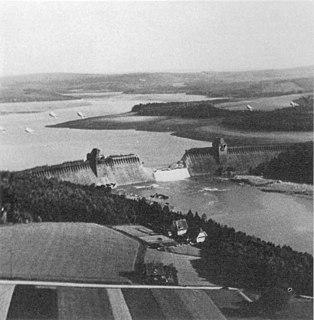 W
WOperation Chastise was an attack on German dams carried out on 16–17 May 1943 by Royal Air Force No. 617 Squadron, later called the Dam Busters, using a purpose-built "bouncing bomb" developed by Barnes Wallis. The Möhne and Edersee dams were breached, causing catastrophic flooding of the Ruhr valley and of villages in the Eder valley; the Sorpe Dam sustained only minor damage. Two hydroelectric power stations were destroyed and several more damaged. Factories and mines were also damaged and destroyed. An estimated 1,600 civilians – about 600 Germans and 1,000 forced labourers, mainly Soviet – died. Despite rapid repairs by the Germans, production did not return to normal until September.
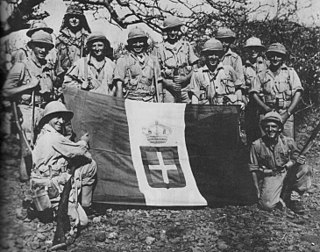 W
WThe East African campaign was fought in East Africa during the Second World War by Allies of World War II, mainly from the British Empire, against Italy and its colony of Italian East Africa, between June 1940 and November 1941. The British Middle East Command with troops from the United Kingdom, South Africa, British India, Uganda Protectorate, Kenya, Somaliland, West Africa, Northern and Southern Rhodesia, Sudan and Nyasaland participated in the campaign. These were joined by the Allied Force Publique of Belgian Congo, Imperial Ethiopian Arbegnoch and a small unit of Free French.
 W
WThe Markham Valley, Ramu Valley and Finisterre Range campaigns were a series of battles within the broader New Guinea campaign of World War II. The campaigns began with an Allied offensive in the Ramu Valley, from 19 September 1943, and concluded when Allied troops entered Madang on 24 April 1944. During the campaign, Australian forces – supported by Australian and US aircraft – advanced through the Markham Valley and Ramu Valleys during which there were minor clashes with Japanese forces, which withdrew towards their main defensive line in the Finisterre Range.
 W
WOperation Garlic was an attack on the Dortmund-Ems Canal by 617 Squadron carried out on 14-16 September 1943. The operation was unsuccessful. The canal was not significantly damaged by the attack, while 617 squadron lost five of the eight aircraft and crews involved in the operation.
 W
WThe Battle of Hollandia was an engagement between Allies of World War II and Japanese forces during World War II. The majority of the Allied force was provided by the United States, with the bulk of two United States Army infantry divisions being committed on the ground. Air and naval support consisted largely of U.S. assets, although Australia also provided air support during preliminary operations and a naval bombardment force.
 W
WThe Huon Peninsula campaign was a series of battles fought in north-eastern Papua New Guinea in 1943–1944 during the Second World War. The campaign formed the initial part of an offensive that the Allies launched in the Pacific in late 1943 and resulted in the Japanese being pushed north from Lae to Sio on the northern coast of New Guinea over the course of a four-month period. For the Australians, a significant advantage was gained through the technological edge that Allied industry had achieved over the Japanese by this phase of the war, while the Japanese were hampered by a lack of supplies and reinforcements due to Allied interdiction efforts at sea and in the air.
 W
WThe Italian campaign of World War II, also called the Liberation of Italy, consisted of Allied and Axis operations in and around Italy, from 1943 to 1945. The Joint Allied Forces Headquarters (AFHQ) was operationally responsible for all Allied land forces in the Mediterranean theatre and it planned and led the invasion of Sicily in July 1943, followed in September by the invasion of the Italian mainland and the campaign in Italy until the surrender of the German Armed Forces in Italy in May 1945.
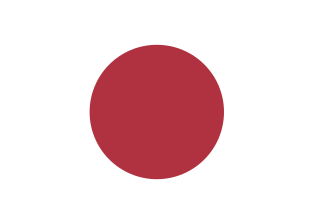 W
WThe Japanese occupation of the Solomon Islands was the period in the history of the Solomon Islands between 1942 and 1945 when Imperial Japanese forces occupied Solomon Islands during World War II.
 W
WThe Invasion of Salamaua–Lae, called Operation SR by the Japanese, was an operation by Imperial Japanese forces to occupy the Salamaua–Lae area in the Territory of New Guinea during the Pacific campaign of World War II. The Japanese invaded and occupied the location in order to construct an airfield and establish a base to cover and support the advance of Japanese forces into the eastern New Guinea and Coral Sea areas. The small Australian garrison in the area withdrew as the Japanese landed and did not contest the invasion.
 W
WOperation Lilliput was the name given to a convoy operation directed by G.H.Q. Operations Instructions Number 21 of 20 October 1942 for transportation of troops, weapons, and supplies in a regular transport service between Milne Bay and Oro Bay, New Guinea between 18 December 1942 and June 1943 in order "to cover reinforcement, supply, and development of the Buna-Gona area upon its anticipated capture" by the Australian 7th Division and the United States Army's 32d Division. Within six months, the convoys, escorted by Royal Australian Navy corvettes and largely composed of Dutch KPM merchant ships, had delivered 60,000 tons of supplies and 3,802 troops from Milne Bay to Oro Bay. Corvettes provided the majority of the escort force. Losses during Imperial Japanese air attacks amounted to two merchant ships, 's Jacob and Van Heemskerk, sunk and two badly damaged while several of the corvettes also sustained damage and casualties.
 W
WThe Malahang Mission Station is a Lutheran filial station situated in Malahang, Morobe Province in Papua New Guinea now under the auspices of the Evangelical Lutheran Church of Papua New Guinea. The Mission station is located on Busu Road, Malahang opposite the Malahang Industrial Area.
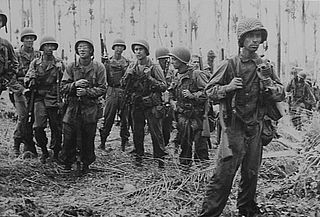 W
WThe New Britain campaign was a World War II campaign fought between Allied and Imperial Japanese forces. The campaign was initiated by the Allies in late 1943 as part of a major offensive which aimed to neutralise the important Japanese base at Rabaul, the capital of New Britain, and was conducted in two phases between December 1943 and the end of the war in August 1945.
 W
WThe New Guinea campaign of the Pacific War lasted from January 1942 until the end of the war in August 1945. During the initial phase in early 1942, the Empire of Japan invaded the Australian-administered Mandated Territory of New Guinea and the Australian Territory of Papua and overran western New Guinea, which was a part of the Netherlands East Indies. During the second phase, lasting from late 1942 until the Japanese surrender, the Allies—consisting primarily of Australian forces—cleared the Japanese first from Papua, then the Mandate and finally from the Dutch colony.
 W
WThe North African campaign of the Second World War took place in North Africa from 10 June 1940 to 13 May 1943. It included campaigns fought in the Libyan and Egyptian deserts and in Morocco and Algeria, as well as Tunisia.
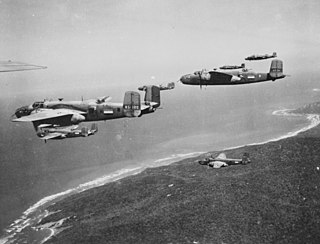 W
WThe North-Western Area Campaign was an air campaign fought between the Allied and Japanese air forces over northern Australia and the Netherlands East Indies (NEI) between 1942 and 1945. The campaign began with the Japanese bombing of Darwin on 19 February 1942 and continued until the end of the war.
 W
WThe bombing of Obersalzberg was an air raid carried out by the Royal Air Force's Bomber Command on 25 April 1945 during the last days of World War II in Europe. The operation targeted Obersalzberg, a complex of residences and bunkers in Bavaria which had been built for Adolf Hitler and other key members of Germany's leadership. Many buildings in the complex were destroyed, though Hitler's residence and the bunker network were only slightly damaged. Two Allied bombers were shot down with the loss of four airmen, and 31 Germans were killed.
 W
WThe Salamaua–Lae campaign was a series of actions in the New Guinea campaign of World War II. Australian and United States forces sought to capture two major Japanese bases, one in the town of Lae, and another one at Salamaua. The campaign to take the Salamaua and Lae area began after the successful defence of Wau in late January, which was followed up by an Australian advance towards Mubo as the Japanese troops that had attacked Wau withdrew to positions around Mubo. A series of actions followed over the course of several months as the Australian 3rd Division advanced north-east towards Salamaua. After an amphibious landing at Nassau Bay, the Australians were reinforced by a US regimental combat team, which subsequently advanced north up the coast.
 W
WThe Solomon Islands campaign was a major campaign of the Pacific War of World War II. The campaign began with Japanese landings and occupation of several areas in the British Solomon Islands and Bougainville, in the Territory of New Guinea, during the first six months of 1942. The Japanese occupied these locations and began the construction of several naval and air bases with the goals of protecting the flank of the Japanese offensive in New Guinea, establishing a security barrier for the major Japanese base at Rabaul on New Britain, and providing bases for interdicting supply lines between the Allied powers of the United States and Australia and New Zealand.
 W
WThe Syria–Lebanon campaign, also known as Operation Exporter, was the British invasion of Vichy French Syria and Lebanon from June–July 1941, during the Second World War. The French had ceded autonomy to Syria in September 1936, with the right to maintain armed forces and two airfields in the territory.